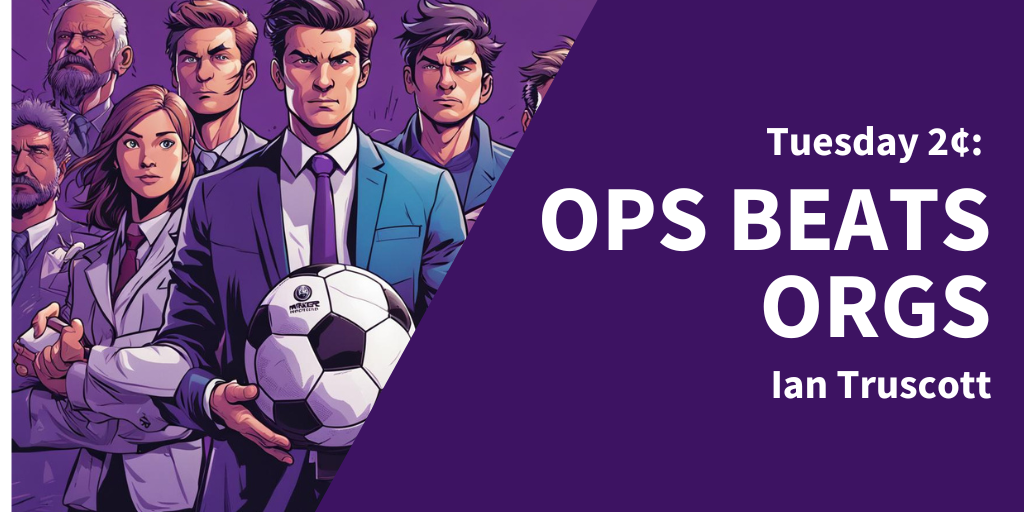I have a slightly convoluted path to inspiration this week, so please bear with me as I have a kick about with the topic of operating models and org charts.
On the Rockstar CMO podcast this week, Jeff Clark and I discussed Revenue Operations, citing this article by Simon Daniels, a Principal Analyst at Forrester.
In a comment about our podcast discussion, over on LinkedIn, Simon pointed me to the work of his colleague Anthony McPartlin, who, in this article discussing the Rev Ops discipline, warns of the trap of confusing org charts for an operating model.
With me so far?
Well, while I am as interested in revenue operations and marketing operations as any marketing leader, what piqued my interest was this trap of operating model vs org chart.
McPartlin described it as follows:
While an organization chart visually indicates reporting lines, it doesn’t represent the complexity of modern operations organizations. An operating model is much broader and defines how the function operates to deliver customer and stakeholder value.
Maybe this all sounds slightly pedantic, the language of consulting, but it’s something worth digging into, as regardless of the marketing discipline, whether it’s Rev Ops, Content Marketing or Demand Gen, this is an important point when shaping our marketing teams.
We don’t create functional teams just with org charts.
I’m doing a couple of advisories at the moment that touch on the team structure, and I’ve been involved in leading the restructuring of marketing teams and being restructured.
It’s really easy to create an org chart thinking that you are changing an operating model or that you are building a machine, and the cogs will all slot together. But if the team doesn’t understand the model, you’ll be grinding those gears.
I hope you will forgive me for making a football analogy (the ball game played with the feet rather than the catchy-throwy-stoppy one). But, this weekend, the BBC pundits purred over a defender at Manchester City, John Stones, stepping forward, making runs, and threatening the opposition, who were all positioned to expect him to stay in his place in defence while he threatened to score.
Was this risky? Allowing the opposition to attack while their best defender wandered about the pitch, out of position?
No, because the manager, Pep Guardiola, has a system; his team is ready for this, other players tucked in behind and covered, and at the weekend, they won (and if you don’t follow English football, just so you know – they do that a lot).
I don’t think you need to be a lover of the beautiful game to understand the analogy. The traditional positions on the pitch, the 4-5-1 formation that the team plays, might represent the org chart; John Stones is a defender, but how the rest of the team played around him and allowed him to push forward is the operating model.
The challenge for a leader is that getting an operating model functioning, even with the best people on your team, takes considerably more time and focus than just moving people around an org chat.
Trust me, I’m a Chelsea fan; we have a great org chart and a billion-pound team, but let’s just say the operating model isn’t firing on all cylinders.
Fancy more of this?
Subscribe to my Rockstar CMO Newsletter

I’m a 3xCMO, now a marketing strategy advisor and podcast host at Rockstar CMO. Although, I’m not a rock star, but a marketing leader, strategist, content marketer, columnist, speaker, industry watcher, and creator of ART (Awareness, Revenue, and Trust) for the companies I work with. But most of all, I am an enthusiastic tea drinker.
You can find me on LinkedIn, Twitter, or now Threads! – or listen to my weekly podcast at Rockstarcmo.com
The half-baked thoughts shared on this blog may not reflect those of my employer or clients, and if the topic of this article is interesting or you just want to say hello please get in touch.
